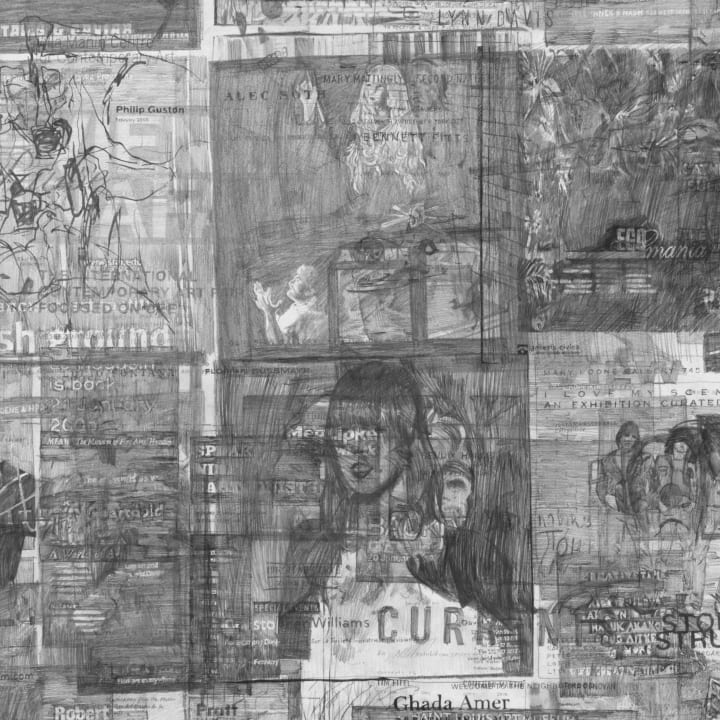CIPRIAN MUREŞAN
-
Overview
David Nolan Gallery is very pleased to announce the opening of Ciprian Mureşan’s first one-person exhibition in New York featuring films, drawings, and installations. A reception for the artist will be held on Thursday, July 7, from 6-8 pm.
Ciprian Mureşan’s (b. 1977, Romania) quietly subversive work reflects upon many themes, using the platform of art as a mode of critique and intervention. He is part of a generation of artists who were adolescents at the time of the fall of Communism in Eastern Europe, and the ensuing political and social restructuring of Romania has profoundly impacted the way in which its artists question artistic production in a post-utopian era.
In a classically postmodern manner, Mureşan reinvents canonical literary, cinematic, and artistic works in order to demystify them, to destroy their auratic presence. He has produced his own versions of iconic works such as the play Rhinocéros by French-Romanian Eugène Ionesco, the famous photograph by Yves Klein entitled Leap into the Void, and the film Andrei Rublev by the Russian filmmaker Andrei Tarkovsky. In a sly twist, Muresan will be revisiting arguably the most famous work of the greatest appropriationist and prankster of recent years, Martin Kippenberger, by creating drawings and a video animation after the 1994 installation of The Happy End of Franz Kafka’s ‘Amerika’ at the Museum Boijmans van Beuningen in Rotterdam. Amerika is one of Kafka’s unfinished novels, and Kippenberger’s huge, bewildering installation was designed to to evoke the atmosphere of the concluding chapter where the European protagonist visits America and attends an employment recruitment center of enormous proportions.
Books have long played a role in Mureşan’s art making. The question of the original and its duplicate is explored in a humorous video by Muresan of monks dutifully transcribing text and images from exhibition catalogs on famous artists such as Joseph Beuys, Elaine Sturtevant, Susan Hiller, and Piet Mondrian.
In 2008, Mureşan created “Auto da Fé,” a series of photographs of excerpts from the book of the same title by Elias Canetti where a reclusive philologist declares war on his library. The excerpts are written as graffiti on the street, creating a fragmented narrative of revolutionary zeal and madness. Mureşan wages his own “war on books,” especially the so-called “Classics,” by vandalizing them, tearing out pages and inserting new text and drawings that interrupt conventional readings. A performance of this action will be presented in a video work and a selection of altered books.
Childhood is a recurring theme throughout Mureşan’s oeuvre, and he questions notions of innocence, play, and the formation of identity within a “new” society. Although he has featured children in previous work, especially his son, Vlad, we as viewers will be invited to revisit our own childhoods with a sculpture of a bouncing ball dispensing machine one finds at amusement parks and carnivals.
Mureşan’s works are best understood when viewed as a body rather than as individual objects. His approach to ideas is realized in many different media that coalesce to form a cohesive view of the world that is sardonic, sometimes playful, and often darkly humorous.
Ciprian Mureşan has exhibited internationally. In 2010, his work was featured at the Vienna Secession, the 17th Biennial of Sydney, the Centre Pompidou, and the Renaissance Society of Chicago. In 2009, the New Museum in New York exhibited his work in “The Generational: Younger than Jesus.” His first museum solo exhibition also took place in 2010 at the Neuer Berliner Kunstverein (NBK). He is also an editor of the influential, Cluj-based magazine, IDEA.
-
-
 Ciprian MureșanThe Doomed City, 2011vintage wooden chair-desk with five books, each rebound to include two graphite on paper drawingsdimensions variable
Ciprian MureșanThe Doomed City, 2011vintage wooden chair-desk with five books, each rebound to include two graphite on paper drawingsdimensions variable -
 Ciprian MureșanThe Wizard, 2011found vending machine and rubber balls66 x 28 x 28 in (167.6 x 71.1 x 71.1 cm)
Ciprian MureșanThe Wizard, 2011found vending machine and rubber balls66 x 28 x 28 in (167.6 x 71.1 x 71.1 cm) -
 Ciprian MureșanUntitled (Monks), 2011video and graphite on paper drawings on 19 sheets, double-sided12 min 13 sec, drawing dimensions variable2 AP
Ciprian MureșanUntitled (Monks), 2011video and graphite on paper drawings on 19 sheets, double-sided12 min 13 sec, drawing dimensions variable2 AP -
 Ciprian MureșanThe Refrigerator, 2009found refrigerator, spray paint30 x 30 x 66 inches
Ciprian MureșanThe Refrigerator, 2009found refrigerator, spray paint30 x 30 x 66 inches
76.2 x 76.2 x 167.6 cm -
 Ciprian MureșanThe Invisible Hand, 2011HD video8 minutes 59 sec2 AP
Ciprian MureșanThe Invisible Hand, 2011HD video8 minutes 59 sec2 AP -
 Ciprian MureșanUntitled (Kippenberger), 2011HD video and 120 unique graphite drawings on tracing paper10 sec. loop, drawings 7 3/4 x 5 3/4 inches each (19.6 x 14.7 cm each)2 AP
Ciprian MureșanUntitled (Kippenberger), 2011HD video and 120 unique graphite drawings on tracing paper10 sec. loop, drawings 7 3/4 x 5 3/4 inches each (19.6 x 14.7 cm each)2 AP
-
-
Press
-
Ciprian Muresan
Brian Boucher · Art in America November 11, 2011Utopians often have a hard time of it in Ciprian Muresan’s work. The Romanian artist’s hilarious photograph Leap into the Void—after 3 Seconds (2004) mimics Yves Klein’s classic image of... -
Ciprian Mureşan
Siona Wilson · Art Review October 15, 2011In Romanian artist Ciprian Mureşan’s first US solo exhibition, I caught myself thinking about E.H. Gombrich’s 1960 art history classic Art and Illusion, an unfashionable book that could very well... -
Art in Review: Ciprian Muresan
Holland Cotter · The New York Times July 21, 2011Ciprian Muresan, born in 1977, is one of several remarkable young Romanian artists (Mircea Cantor and Serban Savu are others) who were on the verge of their teens at the...
-
-
Artist








